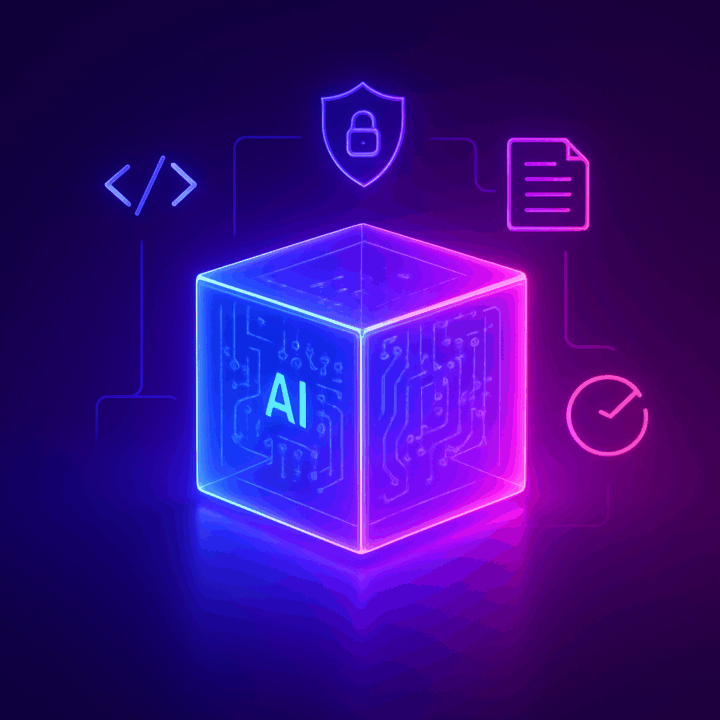Key Takeaways:
- Governance must move from static policy to real-time, operational oversight
- Agentless simulation enables scalable and safe AI testing environments
- Compliance should be automated and embedded into development workflows
- Third-party AI risk can be managed through AI BOMs, vulnerability assessments, and AI Cards
- Culture, training, and access to governance resources are critical to success
In the last two years, we’ve seen an inflection point in enterprise AI maturity. Nearly every large organization working with AI or machine learning has begun forming a dedicated AI governance function. But while the intent is clear, the execution is often murky: Who should lead it? What should the structure look like? How do we govern AI at the speed and scale of business?
This shift was underscored on June 12, 2025, when I testified before the U.S. House Homeland Security Subcommittee on Cybersecurity and Infrastructure Protection, highlighting the urgent need for operationalized AI guardrails that align with political and technical expectations. The message from lawmakers was unmistakable: governance must be built into every stage of the AI lifecycle—not added on afterward.
Traditional, policy-heavy approaches fall short. Governance can no longer be confined to legal teams or static frameworks.
I Know What I Have to Do—Now What?
Once organizations have identified their AI assets and clarified governance requirements, the next step is operationalization. That means moving beyond inventories and policies into ongoing, automated oversight. The question becomes: How can we govern without obstructing innovation?
Agentless Simulation and Secure Testing Environments
One of the core challenges in governance is minimizing friction. Legacy tools often depend on agents installed in production environments or rely on duplicating sensitive data—introducing operational delays and security risks. In a large enterprise, where AI use cases are embedded in thousands of microservices or SaaS workflows, that model simply doesn’t scale.
The Trust Hub takes a fundamentally different approach: agentless discovery and simulation. By enabling teams to test AI models in sandboxed environments—without touching production systems—we can simulate:
- Model behavior under adversarial conditions
- Prompt injection attacks and misuse cases (especially in GenAI)
- Changes in data distributions and concept drift
These simulations create actionable insights while preserving development velocity and operational integrity.
Compliance as Code: Automating Standards Alignment
Compliance often conjures images of checklists and lagging audits. But the modern AI environment demands real-time assurance. With evolving standards like the NIST AI Risk Management Framework, EU AI Act, and ISO/IEC 42001, compliance can no longer be manual.
The Trust Hub enables compliance-as-code—automated checks mapped to internal and external standards, triggered throughout the model lifecycle. This includes:
- Pre-deployment policy validation
- Continuous monitoring of usage thresholds and model updates
- Automated report generation for auditors and stakeholders
By integrating directly into CI/CD pipelines and AI workflows, governance becomes a proactive safeguard rather than a retroactive blocker.
Managing Third-Party AI Risk at Scale
Organizations increasingly rely on external AI services: LLM APIs, predictive analytics platforms, embedded recommendation engines. But most lack sufficient transparency into how these models operate—or what risks they introduce.
The Trust Hub’s third-party module solves this by:
- Discovering vendor-provided AI systems
- Requesting or generating AI Bills of Materials (AI BOMs)
- Conducting automated vulnerability assessments using platforms like ARENA
- Creating and sharing AI Cards summarizing function, risk profile, and controls
This approach turns third-party governance from a spreadsheet exercise into a structured, scalable practice.
Training, Culture, and Institutional Memory
Governance success hinges not just on tooling, but on people. The Trust Hub also functions as an internal knowledge base and training platform, giving stakeholders:
- Onboarding paths for developers, PMs, legal, and compliance teams
- Access to up-to-date policy templates, frameworks, and benchmarks
- Playbooks tailored to industry-specific risks and regulations
This fosters a shared vocabulary and a governance-first culture across teams.
Core Capabilities of the AI Operational Governance Trust Hub
AI Security
- Discover AI systems across the enterprise
- Create and manage AI BOMs
- Simulate adversarial attacks and misuse
- Apply guardrails for safe deployment
- Maintain AI Cards for documentation and transparency
AI Compliance
- Codify internal standards and regulatory mappings
- Automate alignment with NIST, ISO, EU AI Act, etc.
- Trigger audits continuously and track model lineage
Third-Party Risk
- Identify and vet vendor AI systems
- Generate shared AI Cards for vendor oversight
- Run automated threat and impact assessments
Hub Models
- Private Trust Hub: internal, customized to enterprise policies
- Industry Trust Hub: shared learnings and governance templates among peers
- Regional Trust Hub: alignment with local regulatory nuances
As AI adoption accelerates, so does the responsibility to manage its risks. By embedding governance into day-to-day operations—from security testing to compliance automation—the AI Operational Governance Trust Hub offers a pragmatic, scalable framework for enterprises navigating the complexities of modern AI development. By operationalizing trust, the AI Operational Governance Trust Hub offers a pragmatic, scalable way forward.
Jonathan Dambrot is the CEO and Co-Founder of Cranium.ai. Cranium provides cutting-edge solutions for AI security, compliance, and governance. Learn more at www.cranium.ai.





